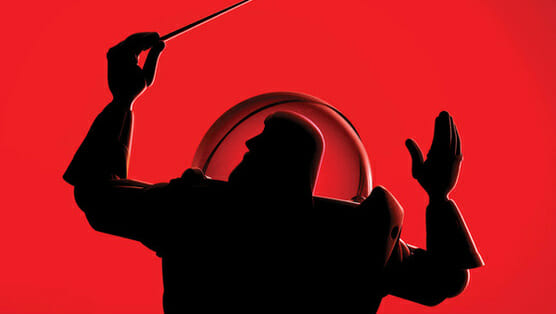
When details about Pixar’s next feature film, Inside Out, first surfaced, Variety called it a high-concept gamble of a flick that will “forever change the way people think about the way people think.”
The film takes place entirely inside the mind of a young girl. Based on what Pixar has teased so far about its fifteenth animated release, the film will go deep inside the girl’s mind to focus on a multicolored group of creatures that personify different emotions. Those characters guide the child, from a “control center” inside her brain, as she goes about her day.
Already, those few story snippets have elicited near-universal praise from media outlets at the promise of more cartoon wonder from Pixar. At a recent film festival in France, Inside Out director Pete Docter made it clear the film will offer a story and characters of deep emotional resonance. The film, he explained, takes a gentle, affectionate look at the loneliness the young girl feels after her family relocates to a new city, forcing her to work through emotions of sadness, anger and joy.
Pixar’s handiwork can make it appear like storytelling magic happens effortlessly at the company. But Pixar co-founder Ed Catmull makes it clear in his new book Creativity, Inc. that the company’s films never come easily.
Catmull offers personal insights on creativity and ways to foster it in a workplace. Creativity, he explains, isn’t some lucky accident at the studio known for a distinctive brand of storytelling and moviemaking—and whose string of movies routinely debut at the top of the box office. Rather, long before audiences get to enjoy the sight of lamps that bounce with glee, robots that explore the universe and toys that go on wild adventures, Pixar takes a deliberate, measured approach to the creative process.
Failure is encouraged—embraced, even—and thanks to a meritocratic environment overseen in part by Catmull, ideas can spring from anywhere. Refining those ideas, of course, separates the studio Catmull co-founded with Steve Jobs and John Lasseter from everybody else.
Take, for example, Pixar’s refinement of Docter’s germ of an idea for Inside Out, as recounted in Catmull’s book.
“What’s inside the mind?” Docter asked Pixar’s so-called “Braintrust,” assembled before him at one point. (The Braintrust is Pixar’s group of writers, directors and executives who shepherd a film’s development.) “(It’s) your emotions—and we’ve worked really hard to make these characters look the way those emotions feel,” Docter went on. “We have our main character, an emotion called Joy, who is effervescent. She literally glows when she’s excited.”
Catmull writes on. “Then we have Fear. He thinks of himself as confident and suave, but he’s a little raw nerve and tends to freak out. The other characters are Anger, Sadness—her shape is inspired by teardrops—and Disgust, who basically turns up her nose at everything.”
After listening to the basic concept, Catmull writes, the Braintrust embraced Docter’s big idea but pushed back on some aspects, including what Catmull describes as one of the movie’s major scenes.
In that scene, two characters argue over why some memories fade, while others stick around forever. The Braintrust seemed to think the original scene didn’t resonate enough. One by one, they began to speak up, finding flaws and encouraging Docter to “spend more time settling on the rules” of the movie’s imaginary world.
Brad Bird, who directed The Incredibles for Pixar, told Docter, “Pete, the thing I want to give you a huge round of applause for is: This is a frickin’ big idea to try to make a movie about.” Someone else asked Docter what he loved most about the film. He replied, “The way the movie opens, I love.”
So they settled. “How we set up the story,” Catmull recalls Docter being told, “has to handshake with that.”
Catmull says he wrote his book to demystify the perceived magic of creativity and to showcase the power of fearless honesty, candor and uninhibited imagination, whether at a giant studio like Pixar or at more ordinary businesses.
Sometimes at Pixar, those traits spin things off in unanticipated directions. The original idea for Monsters, Inc., for example, involved a 30-year-old man beset by monsters in the form of unaddressed childhood fears only he could see. Catmull also writes in Creativity, Inc. about how one movie involved a castle in the sky, a king and princes who didn’t like each other.
A bird showed up at some point, and Pixar ended up deep-sixing everything but the bird and the title: Up.
“Here’s what we all know, deep down, even though we might wish it weren’t true,” Catmull writes. “Change is going to happen, whether we like it or not. Some people see random, unforeseen events as something to fear. I am not one of those people. To my mind, randomness is not just inevitable; it is part of the beauty of life … Rather than fear randomness, I believe we can make choices to see it for what it is and to let it work for us. The unpredictable is the ground on which creativity occurs.”
Andy Meek writes for several national publications and suffers from chronic Beatlemania.